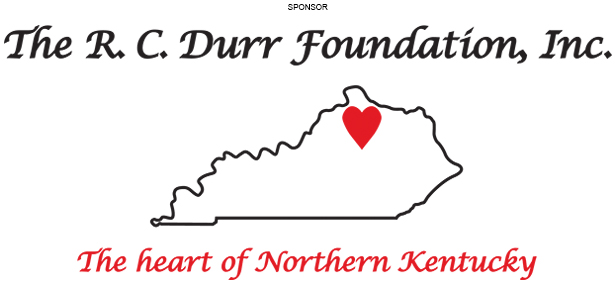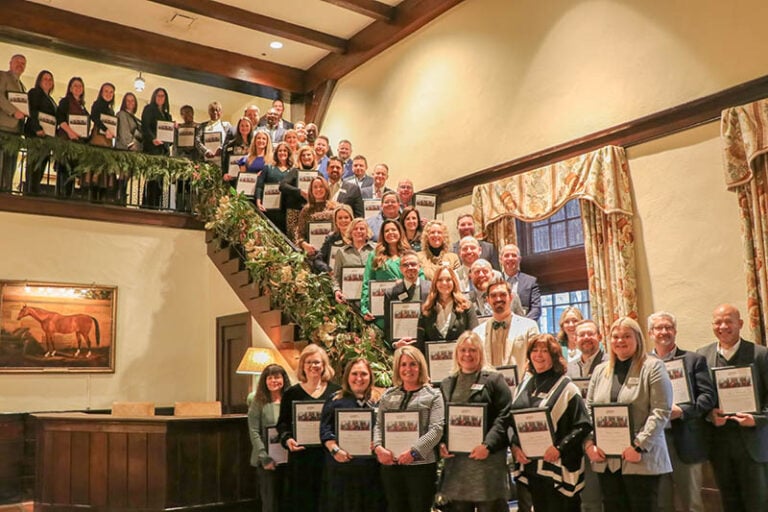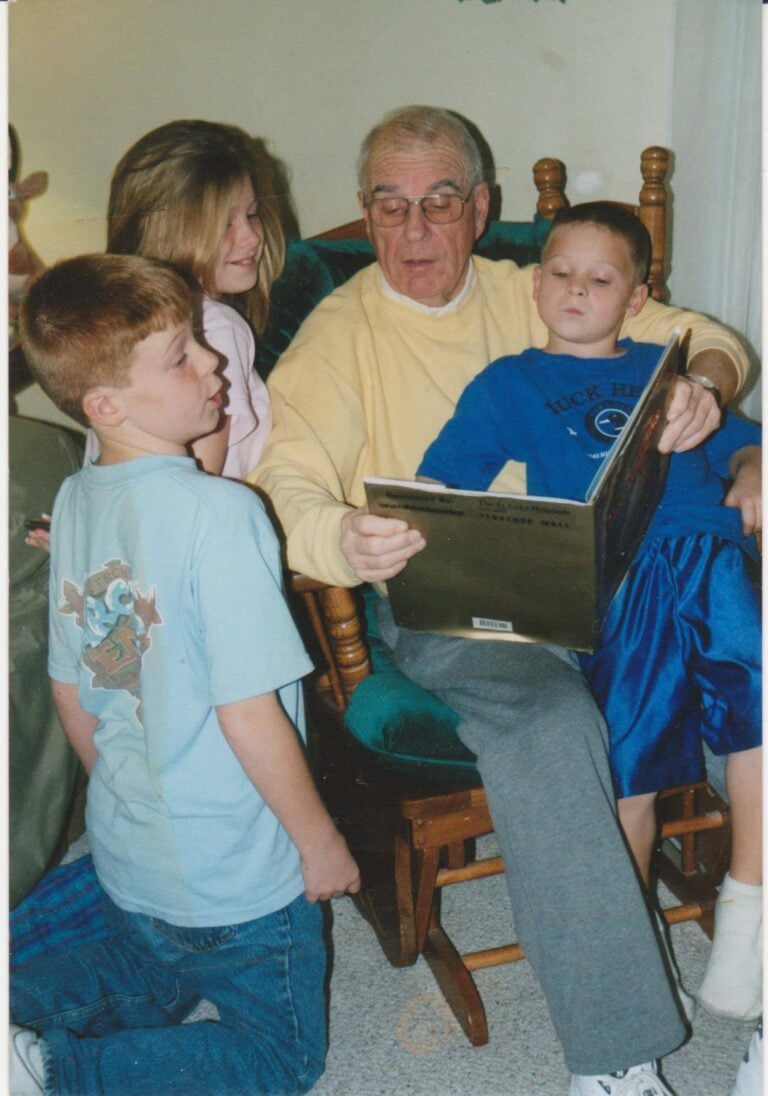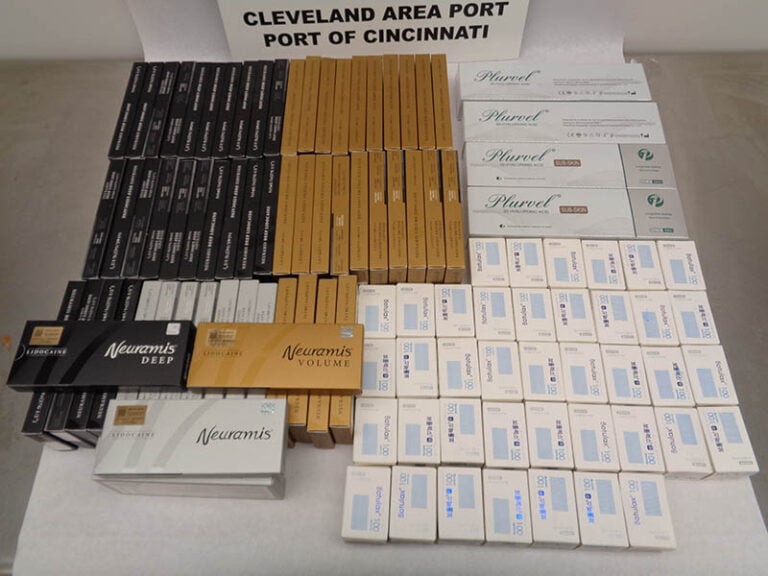(Editor’s note: We’re celebrating ten years of Our Rich History! You can browse and read any of the past columns, from the present all the way back to our start on May 6, 2015, at our newly updated database.)
By John Schlipp and Paul A. Tenkotte, PhD
Our Rich History editor
Amid Louisville’s modern cityscape, the Brennan House at 631 South 5th Street offers a historic nineteenth-century retreat. Its most noted owner, Thomas Brennan (1839–1914), was an inventor and business owner, working in two of the Ohio River watershed’s most innovative cities, Cincinnati and Louisville.

Born in January 1839 in Ireland, Thomas M. Brennan (1839–1914) accompanied his grandmother to the United States in 1842. They landed at New Orleans, where they lived for a time. Thomas demonstrated mechanical skills at an early age and became a talented machinist, working in St. Louis, Missouri, and Cincinnati, Ohio. Brennan married Anna Virgina Bruce (1848–1908) in September 1869 in Louisville (Ancestry.com; Find a Grave; “Thomas Brennan,” “Courier-Journal,” March 1, 1914, p. 9; “Life’s Close: Thomas M. Brennan, Manufacturer, Dead at 74,” “Courier-Journal,” February 28, 1914, p. 7).
In the mid-1850s, Thomas Brennan moved to Louisville. There, in 1855, Abraham Godwin (A.G.) Munn (1819–1909) and Dr. William Henry (W.H.) Goddard established the South-western Agricultural Works. After the retirement of Dr. Goddard in 1865, Munn joined Thomas Brennan in an 1866 partnership at South-western’s factory “on the corner of Eighth and Green and Eighth and Grayson streets.” Renamed Brennan & Co., South-western Agricultural Works,” the plant manufactured “Circular Saw Mills, Horse Powers and Thrashing Machines, Shingle Saw Benches, Cord-Wood Saw Tables, Railroad Horse Powers, Ingersoll’s Patent Hay and Cotton Presses, and Kentucky Clipper Mowers” (Advertisement for Brennan & Co., “Courier-Journal,” January 26, 1866, p. 2; “Louisville Loses Big Factory,” “Courier-Journal,” April 9, 1908, p. 2).
The company also offered repair services for a wide range of agricultural implements, reinforcing its role as a vital support hub for the Ohio River region’s farming community. Under Brennan’s direction, the firm expanded its product line and influence, becoming a prominent manufacturing establishment in Louisville.
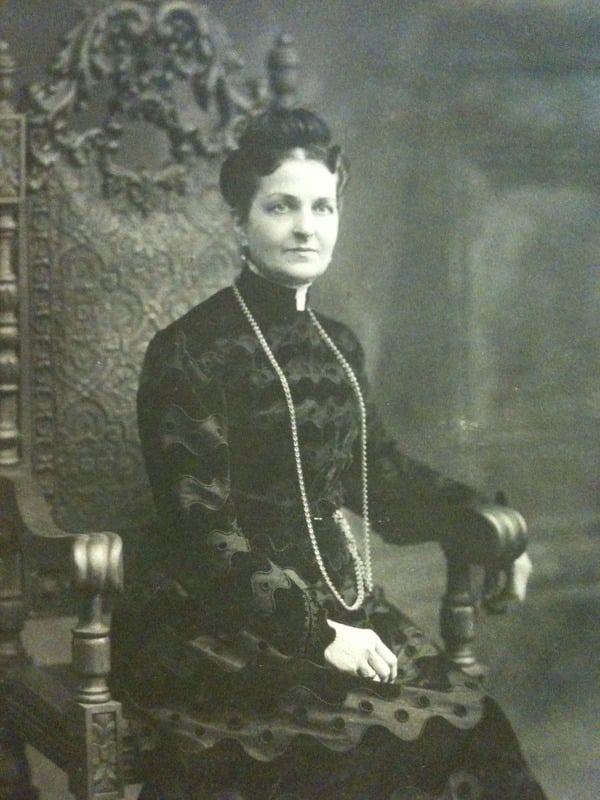
Patents and agricultural innovation
Thomas Brennan’s inventive spirit was formally recognized through at least 17 patents associated with his company. Among the most notable were:
• US Patent No. 192,076 (1877) – A Cane-Mill, co-invented with Abraham G. Munn and Charles T. Clark, revolutionized sugar cane processing.
• US Patent No. 613,115 (1898) – A Shoe for Grain-Drills, co-developed with Edward Christman, improved the efficiency and precision of crop planting.
• US Patent No. 631,844 (1899) – A Seeding-Machine credited to Brennan’s son—Thomas Brennan Jr. (1877–1939)— a continuation of the family’s inventive legacy.
These innovations not only advanced agricultural productivity but also positioned Louisville as a hub for farm equipment manufacturing during a transformative era.
Trials, transitions, and legal battles
While Thomas Brennan oversaw the company, A.G. Munn worked for six years (1866–1872) in finance in New York City. While Munn was gone, C.J. Kent “was admitted to the firm” of Brennan & Co. in 1869. Three years later, in January 1872, Munn returned to Louisville, purchasing the equity of Kent. Then for eight years—from 1872 until 1880—Thomas Brennan and A.G. Munn operated the business together. In 1880 they admitted A.G. Munn’s son, W.G. Munn, to the firm (“Louisville Loses Big Factory,” “Courier-Journal,” April 9, 1908, p. 2).
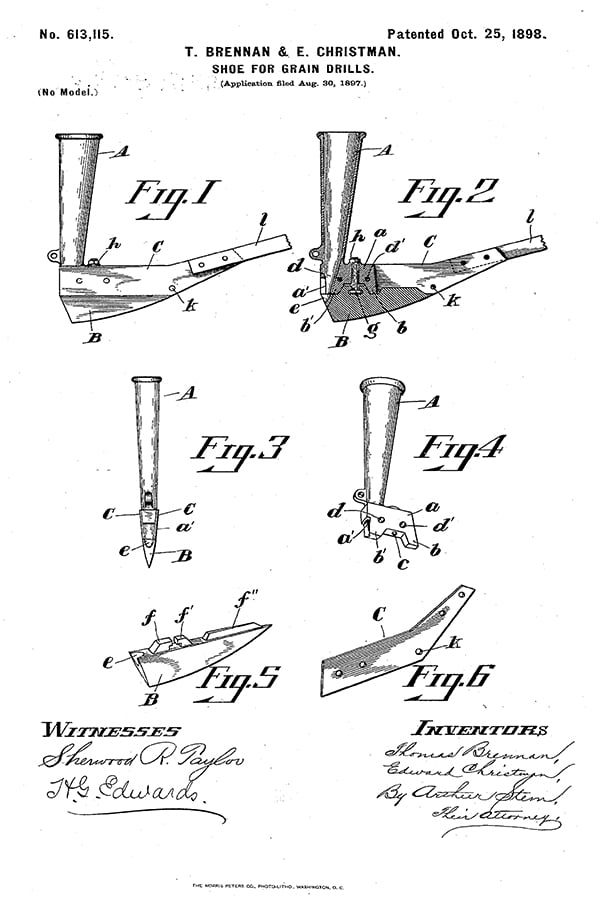
In 1882 Brennan & Co., South-western Agricultural Works legally converted from a partnership into an official corporation, with Thomas Brennan, A.G. Munn, W.G. Munn, and Thomas W. Weller as “incorporators and directors.” A.G. Munn became president, Brennan vice president, and W.G. Munn secretary and treasurer. Following Weller’s death in 1887, Thomas Brennan retired in 1888 and gave his financial interests to his three sons—Harry Martyn (1872–1948), Albert (1874–1971), and Thomas—as well as to his daughter May Bruce Shallcross (later, May Bruce Washington, 1873–1959) (Ancestry.com; “Louisville Loses Big Factory,” “Courier-Journal,” April 9, 1908, p. 2).
The turn of the twentieth century marked a turbulent period for South-western Agricultural Works, revealing deep divisions within the Brennan and Munn families. In December 1900, a leadership conflict erupted when vice president Harry M. Brennan attempted to dismiss longtime superintendent Edward Christman. President A.G. Munn challenged the move, citing company bylaws that gave him sole authority over such appointments. Munn swiftly filed for an injunction, arguing that Christman’s removal during the company’s busiest season would disrupt operations. The suit also alleged that Thomas Brennan Jr., previously discharged for insubordination, continued to loiter around the factory, causing unrest among employees. The legal problems seemed to be partially resolved when W.G. Munn purchased the Brennan family’s remaining financial interests in circa 1900 (“Early Astir, with Injunction Writ against Brennan,” “Courier-Journal,” December 18, 1900, p. 6; “Louisville Loses Big Factory,” “Courier-Journal,” April 9, 1908, p. 2).
In March 1903 the American Seeding Machine Company, a New Jersey-based conglomerate with $15 million in capital, purchased the South-western Agricultural Works. This so-called “Drill Trust” controlled 85% of the US seeding machine market, including firms like Superior Drill Co. and Hoosier Drill Co. (“Combine Absorbs Brennan & Co. Agricultural Works,” “Courier-Journal,” March 14, 1903, p. 7; “Drill Trust Retrenching,” “Courier-Journal,” July 16, 1904, p. 10).
The Louisville factory became known as the Kentucky Drill Company Division of the American Seeding Machine Company. Although production at the Louisville division continued to grow, the corporate owner decided to close the Louisville factory in 1907, relocating it to Richmond, Indiana (“Louisville Loses Big Factory,” “Courier-Journal,” April 9, 1908, p. 2).
May Bruce Brennan
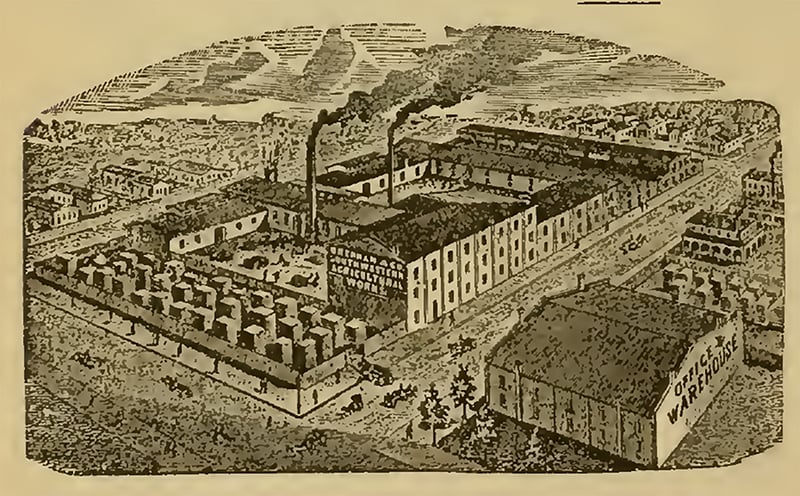
One of Thomas Brennan’s many children, May Bruce Brennan, was a graduate of two Cincinnati institutions of higher learning, Wesleyan College and the Cincinnati Conservatory of Music. Her first husband, Lewis Zane Shallcross, died of bronchitis in 1905. The following year, the “Courier-Journal” announced her engagement to William Lanier Washington of New York, noting that “Miss Brennan is widely known in Louisville, New York and Newport [Rhode Island], having spent the past two years in the last two places” (Find a Grave; “Courier-Journal,” May 20, 1906, p. 16).
The Ronald–Brennan House
The Ronald–Brennan House is a testament to the family’s prominence. Originally built by the Ronald family, the home was later acquired by the Brennans and became a symbol of their success. The last family owner was Dr. J. Arvid O. Brennan, the son of Thomas and Anna Virginia Bruce Brennan. With Dr. Brennan’s death on September 1, 1963, the house and furnishings were willed to the Filson Club of Louisville. The Italianate-style mansion, with its ornate architecture and period furnishings, was added to the National Register of Historic Places in 1975 and has since been celebrated as one of Louisville’s favorite buildings, as voted by “Courier-Journal” readers (Chris Poynter, “Presenting your favorite Louisville buildings,” “Courier-Journal,” November 11, 2004, p. 11; Richard H. Hill, “Dr. Brennan, Benefactor of the Filson Club,” “The Filson Cluib History Quarterly,” Vol. 38, no. 1, January 1964).).
From 1963 to 1992, the Brennan House was owned by the Filson Club, which used it for historical preservation and educational programming. In 1992 the Filson sold it to a private foundation, which continues to operate it as a cultural touchstone, offering tours and events that connect the public with Louisville’s rich history.
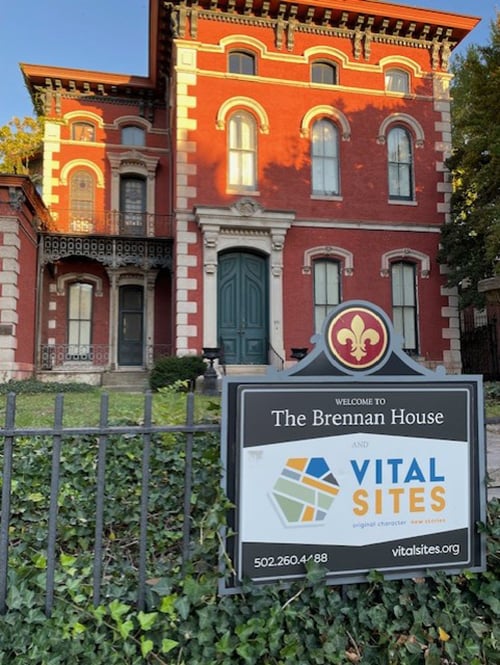
Adding to its allure, the Brennan House is a fixture on Louisville’s ghost walking tours and is frequently listed among the city’s most haunted locations as reported in the media, including “USA Today.” Visitors and staff have reported unexplained footsteps, flickering lights, and eerie sensations. This spectral reputation adds a layer of mystery to the Brennan legacy, blending history with the supernatural.
Thomas Brennan’s story is one of industrial ingenuity and enduring legacy. From pioneering farm machinery that transformed Kentucky agriculture to bequeathing one of Louisville’s most iconic homes, Brennan’s impact is both tangible and timeless. His life reflects the spirit of innovation that helped shape the region’s economic and cultural identity.
Today, the Brennan House stands not only as a monument to 19th-century craftsmanship but also as a portal into the past — where history, industry, and legend converge. Visitors are invited to explore its halls, learn about the man behind the machines, and experience the echoes of Louisville’s inventive past.
John Schlipp is a Career Navigator Librarian at Kenton County Public Library specializing in business resources and intellectual property awareness. He is a member of the Patent & Trademark Resource Center Association, and can be contacted at john.schlipp@kentonlibrary.org.
Paul A. Tenkotte, PhD is Editor of the “Our Rich History” weekly series and Professor of History at Northern Kentucky University (NKU). To browse ten years of past columns, see: https://nkytribune.com/category/living/our-rich-history/. Tenkotte also serves as Director of the ORVILLE Project (Ohio River Valley Innovation Library and Learning Engagement). For more information see orvillelearning.org. He can be contacted at tenkottep@nku.edu.







